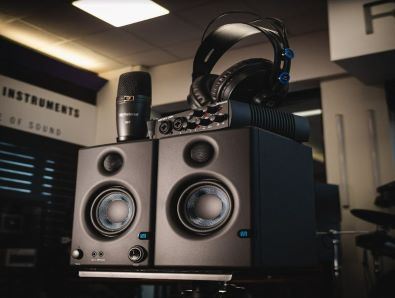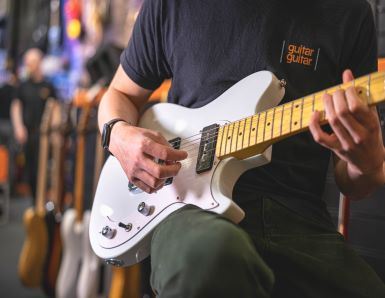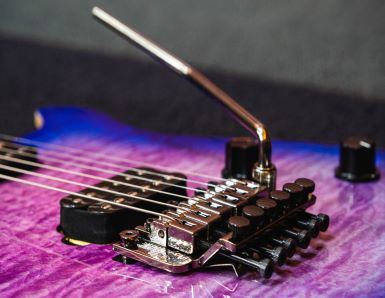How To Choose The Best Acoustic Guitar Strings
Disclaimer: The information in this article is provided by the guest blogger and does not necessarily reflect the views and opinions of guitarguitar.
Whether you are a new player being faced with the prospect of your first change of strings, or a seasoned veteran who’s just never really taken the time to look into the whole topic of strings with much depth, there’s a surprising wealth of factors to consider when picking the best acoustic guitar strings for your style and tonal preferences.
From choosing the right material and gauge to less considered factors such as price or even packaging, you need to have the right information up front to make the best choice.
So I’ve created a convenient and concise overview of all the main things you might consider when picking the perfect acoustic guitar strings that you can use as a handy reference.
Should I Get Nylon or Steel Strings?
.jpg)
When it comes to picking the best strings for you, most factors that you will consider are subjective and will ultimately boil down to personal preference. However, when it comes to using the right string material for your guitar, it’s actually very important to use the correct type or you could end up damaging your instrument.
Flamenco and Classical guitars will generally use nylon strings, which are thicker and produce a softer, more mellow sound than steel strings. They also produce considerably less tension than steel strings and as such most classical guitars are not designed to withstand the tension that steel strings provide, so using them can damage the instrument!
Regular acoustics on the other hand have extra bracing and construction to take the additional tension from steel strings which produce a much brighter and snappier tone. You’ll more commonly find this used for things like rock and blues.
These different types of strings are not normally interchangeable, so identify if your instrument is a classic or steel stringed instrument and ensure you buy the correct strings for that type.
If your guitar is already missing the strings for any reason and you’re struggling to know which ones to get, another easy way to identify which type yours is would be to look at the bridge or saddle. Steel string acoustics will generally have ‘pins’ that hold the ball of the string in place, whereas classical or flamenco guitars will have the nylon strings tied around the bridge using a special kind of knot.
How Often Should I Change Guitar Strings?

As your guitar strings age, they will lose their tone, luster and they’ll become dirty as oils from your hands build up in between the windings on the string. Given enough time, the string will darken from visible dirt and dead skin.
Even so, most of us are a little guilty of waiting too long before changing the strings.
You can expect most reputable string brands to hold their tone for a good 2-3 weeks, and after a few months, they will be noticeably dull and stale sounding. This of course can increase or decrease depending on how much time you spend playing, your environment, and if you are wiping the strings down after playing.
So, is there a good general rule of thumb for when you should change strings?
If you are recording or holding performances to a crowd fairly often, it’s a good idea to keep your strings fresh, and is best if you can change them every couple of weeks. But if you are primarily practicing at home and no one will care if it sounds a little dull, every few months will suffice.
Tone and Playability Considerations?
Although we generally boil acoustic strings down to simply nylon and steel, there are actually a lot of different material variations out there which can provide a wide range of tonal qualities.
So let’s walk through some of the most common characteristics of different string materials to help you make an informed decision on what’s most appropriate for you.
- 80/20 Bronze: Despite what the name might lead you to believe, these are actually made from 80% copper and 20% zinc winding over a steel core. They are sometimes simply referred to as regular ‘brass’ strings, are one of your most common types of steel strings and have a bright and present sound. These can compliment guitars that already have a good amount of bass in their sound by adding that top end chime such as a Dreadnought or Jumbo style acoustic.
- Phosphor Bronze: These offer a slightly more warmer and mellower sound when compared to the 80/20 bronze. This makes them great when paired with smaller bodied guitars that already have a bit of natural top-end to them and benefit from that extra warmth. Ideal for styles of music that need that darker sound.
- Coated Strings: This is a broad term that accounts for any kind of string that has a plastic polymer-coated finish applied over the string, which is intended to give the string additional life and longevity. Coated strings can sometimes affect the feel of the string and generally takes a little bit of the high-end out of the tone creating a warmer sound.
- Nylon: The most common type of string for standard classical guitars, designed to be well rounded and appropriate for all players.
- Silver-plated Copper: Also just referred to as ‘silver strings’ which are then wrapped over the nylon core for the 3 bass strings of classical guitars. Silver-plated Copper strings produce a warm and rich tone.
There are many other types available, but these are the most common and should give you a good starting point to start exploring.
All About Gauges
Strings are available in different thicknesses, indicated by a number which is a representation of 1/1000th of an inch. So for example a 9 gauge string is 0.009 inches.
String packs will usually use two numbers in their name that represent your top treble string (thinnest) and your lowest bass string (thickest). So if you see a pack of strings with 10-49 on you know the top string is a 10, and the lowest string is a 49. We don’t concern ourselves too much with the in-between string gauges.
Many manufacturers will also use easier terms such as ‘light’, ‘medium’, or ‘heavy’ for a simpler way to categorise string thicknesses.
If you are unsure which ones to use, as a beginner acoustic guitarist, going with a ‘light’ set is always a good choice as it’ll be easiest on your hands when it comes to performing bends.
Generally speaking, if you are either tuning down lower than E or are using a guitar that has a longer scale length (above 25.5’’) you may want to consider using a thicker string as it provides additional tension to counteract the extra slack you have added by down tuning.
Another reason to explore different string gauges is for tonal reasons, a thicker string will often produce a bit more bass and have a slightly more rounded top end. Whereas thinner strings will have a little more snap and bite to them.
But keep in mind this also affects playability. If the tension is too high it may become difficult to perform bends, yet if your tension is too low it may be hard to keep in tune. So it will need some trial and error before finding what exactly works for your preferences.
Experiment to Find What Works for You
Of course, there is no hard and fast rule about what material and gauge will be the best. And while we have provided suggestions on where to start, we also encourage you to experiment over time to develop and hone in on your own preferences so you can discover what acoustic guitar strings work best for you.
Check out our range of acoustic guitar strings here
Author: Brian of KillerGuitarRigs
Brian has been playing music since 1986 when his older brother taught him to play Gigantic by The Pixies on a bass with two strings. His website KillerGuitarRigs.com aims to help you spend less time on gear and more time on guitar.











